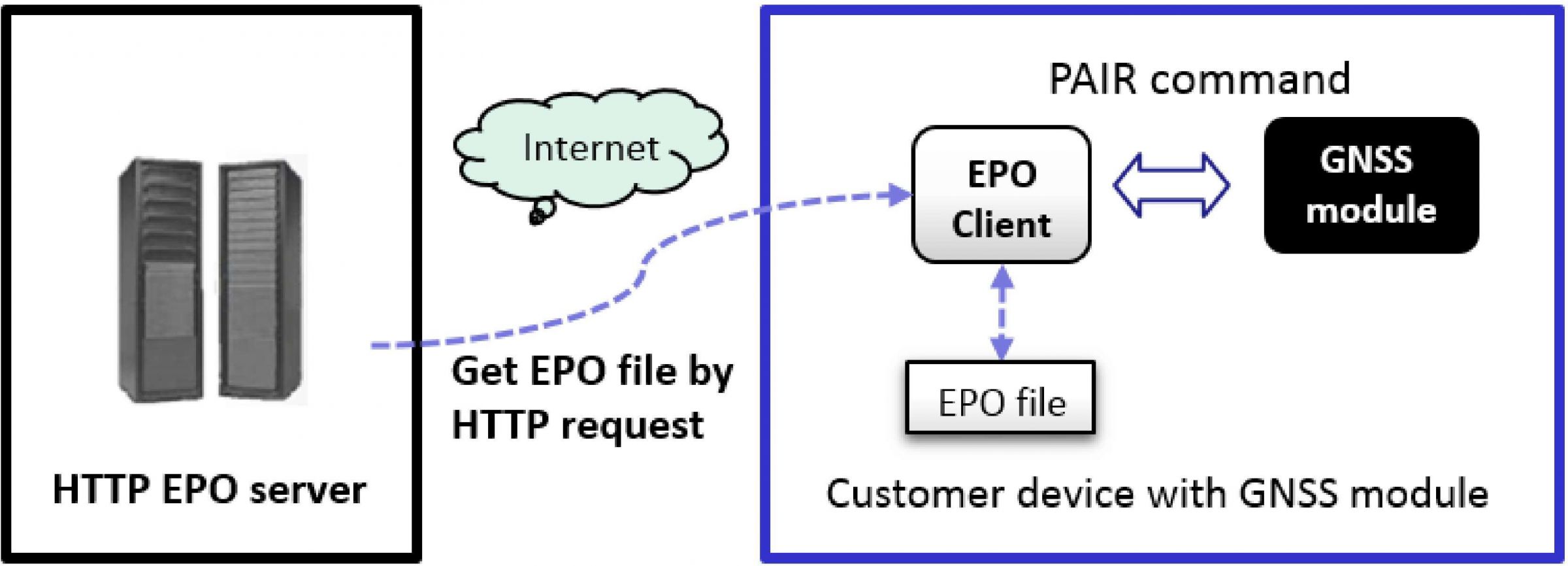EPO install guide
EPO (Extended Prediction Orbit) is one of MediaTek's innovations. It is an off-line server-based Assisted
GPS (A- GPS) solution. EPO is the world's leading technology on the satellite orbit prediction that
supports the orbit prediction for up to 14 days. At this time, this is one of best ways to have the
ephemeris and almanac data available for positioning before receiving the broadcast data, ie, the
EPO can replace the broadcast ephemeris/almanac data. With this information, the receiver can
estimate the satellite location without decoding the data. Therefore, it significantly improves the TTFF
performance, especially for the cold and warm starts.
The architecture layout of the EPO is shown in Figure 1. There are two types of EPO files, EPO and QEPO,
provided by the EPO server. EPO supports the orbit prediction for up to 14 days, which provides the GPS
and GLONASS constellations. After SDK 1.4.0 version, the FW supports Galileo EPO data which is up to
7-day prediction.
After SDK1.5.0 version, the FW supports Beidou EPO data which is up to 3-day prediction. In addition, we
do not support the mode of Beidou EPO used only. In order to facilitate the receiver's performance, it needs
to be downloaded with other constellations' EPO data, eg, GPS and/or GLONASS EPO data. For those
3-day or 7-day EPO data, the corresponding files are uploaded to the server daily. QEPO provides a 6-hour
orbit prediction. The QEPO file is generated on the server every hour. Thus, the valid time of downloaded
QEPO file is always greater than 5 hours. The QEPO supports four constellations: GPS; GLONASS; Beidou;
and Galileo. Users can download the EPO or QEPO file via the internet to their desired devices.

| EPO user guide | |
| EPO Implement Demo Code |
新闻稿
 台湾卓越无人机联盟参访大辰科技领先企业 聚焦全球定位技术与无人机应用
台湾卓越无人机联盟参访大辰科技领先企业 聚焦全球定位技术与无人机应用台北时间上午10点,台湾卓越无人机海外商机联盟在颜东标的带领下,由汉翔航空工业、工业技术研究院及经济部航太产业推动小组等产业代表组成参访团,莅临智慧制造领域的领先企业进行技术交流。本次参访中,Locosys大辰科技分享了在RTK(即时动态定位)、惯性导航技术,以及天线应用于无人机系统上的最新成果,并特别介绍了飞行路径自主规划演算法等技术亮点。此外,生产品质管理系统的导入及其助力智慧制造的成功经验,也成为交流重点之一。
阅读更多 LOCOSYS大辰科技参加新北电动车产业链博览会展现领先智慧定位技术
LOCOSYS大辰科技参加新北电动车产业链博览会展现领先智慧定位技术为推动台湾电动车产业发展并促进国际交流,新北市政府举办「电动车产业链博览会」,盛大汇聚国内外知名企业与创新新创公司共同参与。作为全球定位技术的领导者,LOCOSYS大辰科技在本次展会中亮相,展示其最新的高精度定位技术,致力于推动电动车产业迈向智慧化与永续发展。新北市市长侯友宜莅临LOCOSYS大辰科技摊位,对其创新技术给予高度肯定。
阅读更多 LOCOSYS大辰科技推出全新高性能SONY (GNSS/RTK) 全球卫星定位模组
LOCOSYS大辰科技推出全新高性能SONY (GNSS/RTK) 全球卫星定位模组LOCOSYS大辰科技欣然宣布推出三款全新高性能GNSS/RTK 卫星定位模组,包括SO-1612-15、SO-1612-1N 和SOR-1612。模组采用日本知名晶片大厂SONY 的最新CXD...
阅读更多
